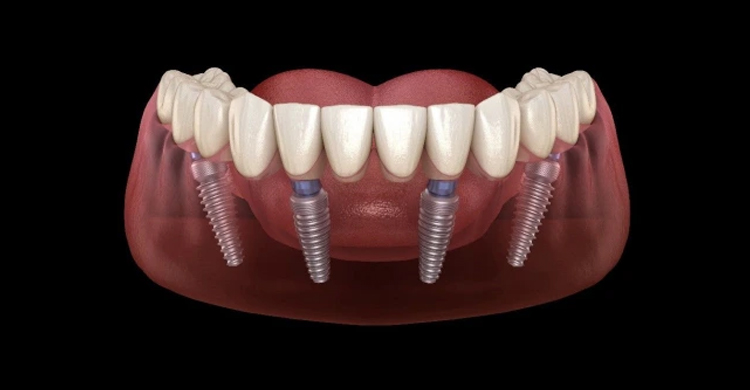
Blog Posts
RECENT BLOG POST


04 Aug 2021


10 Aug 2021


10 Aug 2021


By Dr. Aastha Chandra

06 Jan 2023
DENTAL IMPLANTS vs DENTAL BRIDGES
The two popular restorations used to replace missing teeth are either dental Implants or dental Bridges. There is no question that a missing tooth must be replaced. A missing tooth not only affects your self-esteem, appearance and speech but also reduces functionality. A single missing tooth can lead to loss and damage of multiple other adjacent and opposing teeth.
Although both, Implants and Bridges, may appear to give similar results, they are vastly different and it is important to know in detail about these options before making a treatment choice.
1. What is a Dental Implant?
A dental implant is a titanium post (replicating the tooth root) that supports a crown. This implant is placed in the jawbone with which it eventually fuses, thus making sure it is anchored in this position. After the implant has integrated with the bone, an abutment is attached to the implants and a crown is either screwed into or cemented over this abutment.
2. What are some of the Pros and Cons of a Dental Implant?
Pros:-
a. Closest Replica of a natural tooth:- The implant itself replicates the root of the tooth and the crown placed above this replicates the supra structure of the tooth. Dental implants look, feel and function just like natural teeth.
b. Preserves your jawbone:- Having an open space in your mouth where your missing tooth once was leads to loss of height and width of the bone in that area. Dental Implants stimulate and preserve natural bone growth and prevents its deterioration.
c. Prevents damage to the adjacent teeth:- A dental bridge takes support of the adjacent teeth to replace missing teeth and because its not anchored in bone, there is loss of bone in the area below the bridge. An implant stands on its own and hence does not require the shaping of the adjacent teeth for support.
d. Lasts longer with lower maintenance:- High quality dental implants can last a lifetime. They need lesser maintenance like flossing or using a waterpik.
Cons:-
a. It is a surgical procedure:- Dental Implants require a minor surgery as the implants have to be placed inside the bone. This surgery is extremely straightforward and is done under a local anaesthesia. Also, advancements in implant technology such as 3D CBCT SCANS have minimised any associated risks.
b. Time:- Even though the Implants can be placed in a single sitting, the Crown on top of these Implants is placed after a minimum period of 2.5 to 3 months. This is because we have to wait for the Implants to integrate with the bone (osteointegration) in order to optimise their strength. However, in many cases we can create a temporary Crown before your permanent restoration.
3. What are Dental Bridges?
Dental Bridges are used to bridge the gap between one more missing teeth. The bridge is supported by natural teeth on either side.
Pros:-
a. Much faster:- Because it is not anchored in the bone and we do not have to wait for osteointegration, this is a faster process and can be completed in 3- 5 days.
b. No surgery required:- Unlike an Implant procedure, this does not require any surgical intervention.
c. Suitable for underlying health concers:- If you have any systemic conditions like diabetes, bleeding disorders, osteoporosis or a recent myocardial infarction, a bridge may be the optimal solution for you.
Cons:-
a. Less aesthetically pleaseing:- Bridges are not as natural looking as Implants. Bone loss may also occur in the region of the missing teeth which can appear unaesthetic and cause food lodgement and tartar accumulation which further leads to deterioration of gum health in that region.
b. Periodic placement:- In case the adjacent teeth get decayed, they may fracture or require root canal treatments. In that case the bridge will have to be replaced.
c. Damage natural teeth:- Preparing natural teeth for a bridge may damage perfectly healthy teeth adjacent to the missing tooth. A considerable amount of tooth structure is lost during this shaping just in order to provide support for the missing tooth.
d. Higher maintenance:- They need more maintenance as compared to dental Implants to keep them clean and healthy. When the bone deteriorates in the region of the missing teeth, it leads to a gap between the Crowns and the gums which leads to further lodgement and takes a greater effort to maintain.
Please consider the above mentioned points to give you an idea of which treatment you would like to pursue and speak to your dentist to determine which treatment option is best suited for you.

